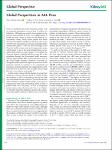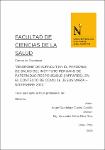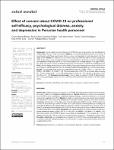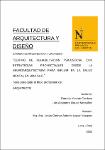Mostrar el registro sencillo del ítem
Global Perspectives in AKI: Peru
| dc.contributor.author | Herrera Añazco, Percy | |
| dc.contributor.author | Rivas Nieto, Andrea C. | |
| dc.contributor.author | Neyra, Javier A. | |
| dc.date.accessioned | 2023-10-19T23:05:22Z | |
| dc.date.available | 2023-10-19T23:05:22Z | |
| dc.date.issued | 2023-05-08 | |
| dc.identifier.citation | Herrera, P., Rivas, A. C., & Neyra, J.A. (2023). Global Perspectives in AKI: Peru. Kidney 360, 4(6), 828-832. https://doi.org/10.34067/KID.0000000000000135 | es_PE |
| dc.identifier.other | . | es_PE |
| dc.identifier.uri | https://hdl.handle.net/11537/34672 | |
| dc.description.abstract | Peru is a middle-income Latin American country with an estimated population of more than 31 million inhabitants.1 Although our country has experienced significant improvements in some social determinants of health, the main causes of death are still related to socioeconomic status, which means people with lower incomes have higher mortality rates because of less access to health care, education, basic services, and employment, among other aspects.1 There are other challenges in the Peruvian health system, such as its fragmented nature which makes it one of the most dysfunctional and unequal health systems in Latin America. For example, the Peruvian Ministry of Health (MINSA) covers 50% of the population through the Government health insurance, whereas approximately 20% of Peruvians have access to the Social Health Insurance (EsSalud).2 However, although the health system has improved in terms of health insurance outreach, it continues to be centralized and precarious and has structural and organizational problems that have an effect not only on health care coverage but also on its delivery and quality.2–5 In this context, along with the barriers to access basic health care services6 and the effects of climate change, the incidence of AKI is increasing in Peru and in other low- and middle-income countries.7 Despite the fact that AKI constitutes a public health burden of growing repercussion in Peru and surroundings, there are lack of public health data and policy, as well as suboptimal patient and provider education and clinical care. Herein, we describe important challenges and provide perspectives and possible solutions to improve AKI care in Peru. | es_PE |
| dc.format | application/pdf | es_PE |
| dc.language.iso | spa | es_PE |
| dc.publisher | Lippincott Williams and Wilkins | es_PE |
| dc.rights | info:eu-repo/semantics/openAccess | es_PE |
| dc.rights.uri | https://creativecommons.org/licenses/by-nc-sa/4.0/ | * |
| dc.source | Universidad Privada del Norte | es_PE |
| dc.source | Repositorio Institucional - UPN | es_PE |
| dc.subject | Nivel socioeconómico | es_PE |
| dc.subject | Mortalidad | es_PE |
| dc.subject | Atención médica | es_PE |
| dc.subject | Servicio de salud | es_PE |
| dc.title | Global Perspectives in AKI: Peru | es_PE |
| dc.type | info:eu-repo/semantics/article | es_PE |
| dc.publisher.country | PE | es_PE |
| dc.identifier.journal | Kidney 360 | es_PE |
| dc.subject.ocde | https://purl.org/pe-repo/ocde/ford#3.01.00 | es_PE |
| dc.description.sede | Breña | es_PE |
| dc.identifier.doi | https://doi.org/10.34067/KID.0000000000000135 |







